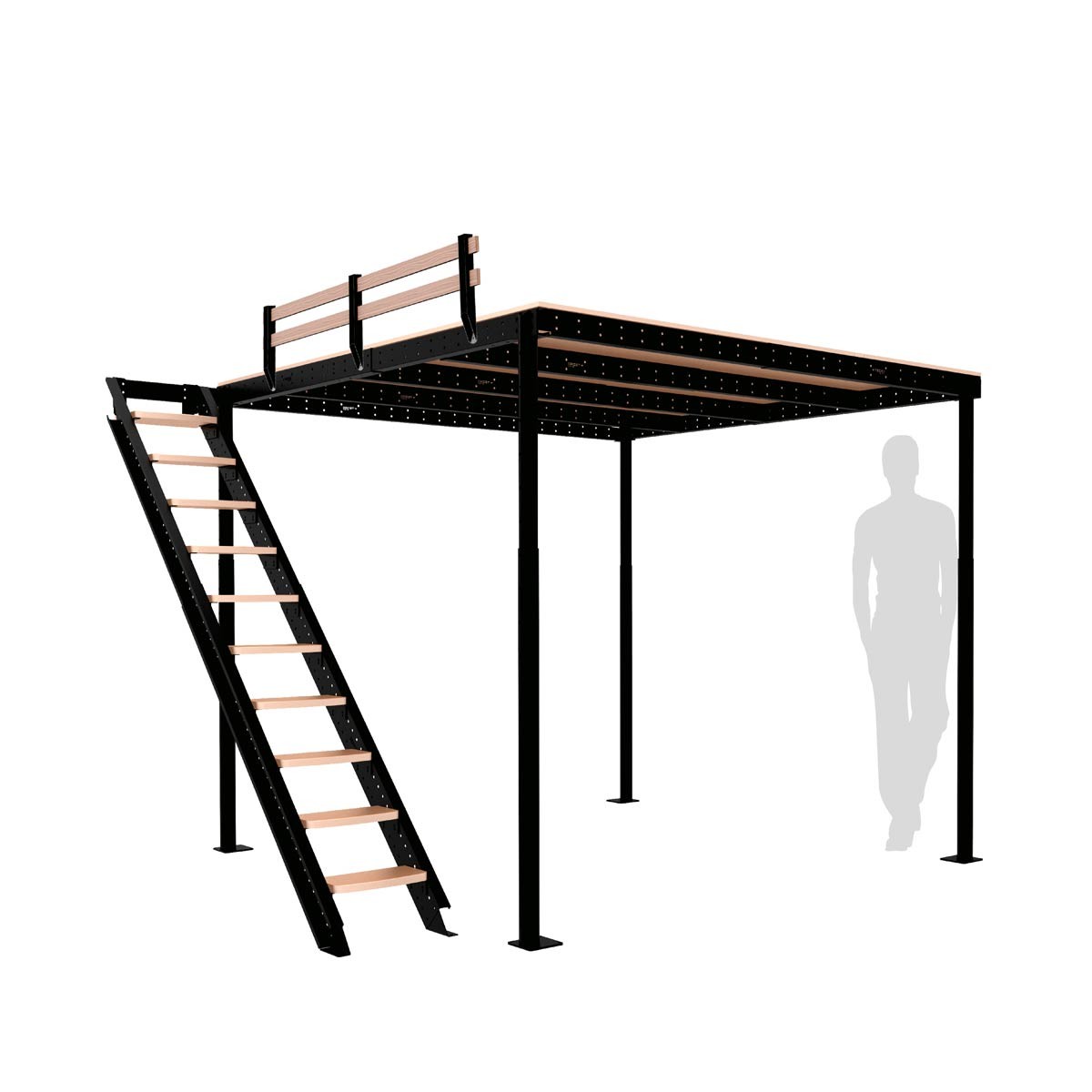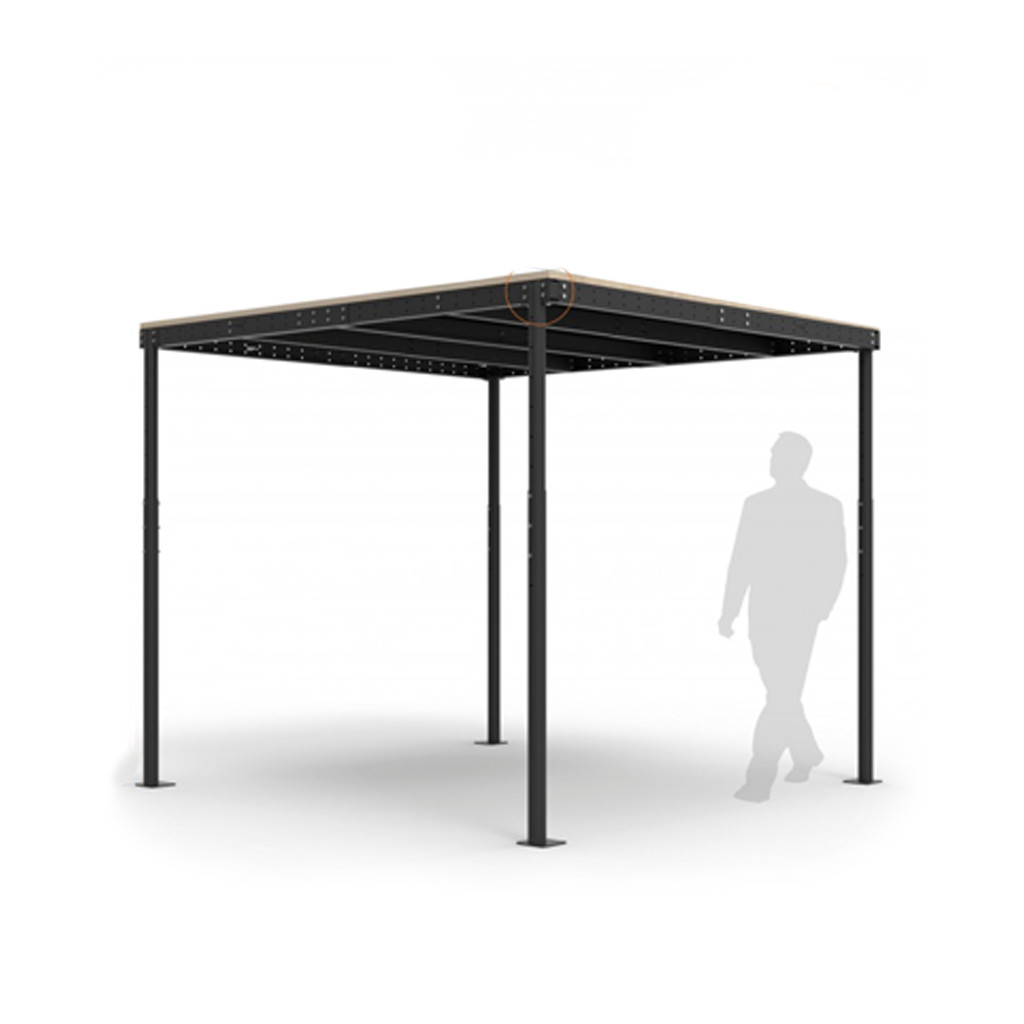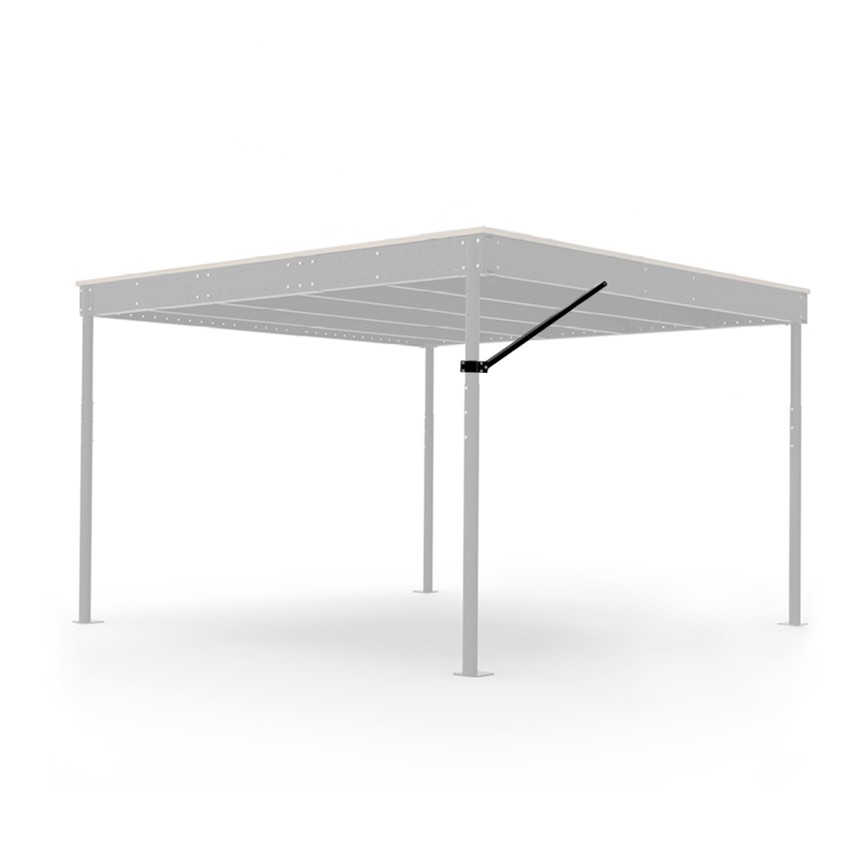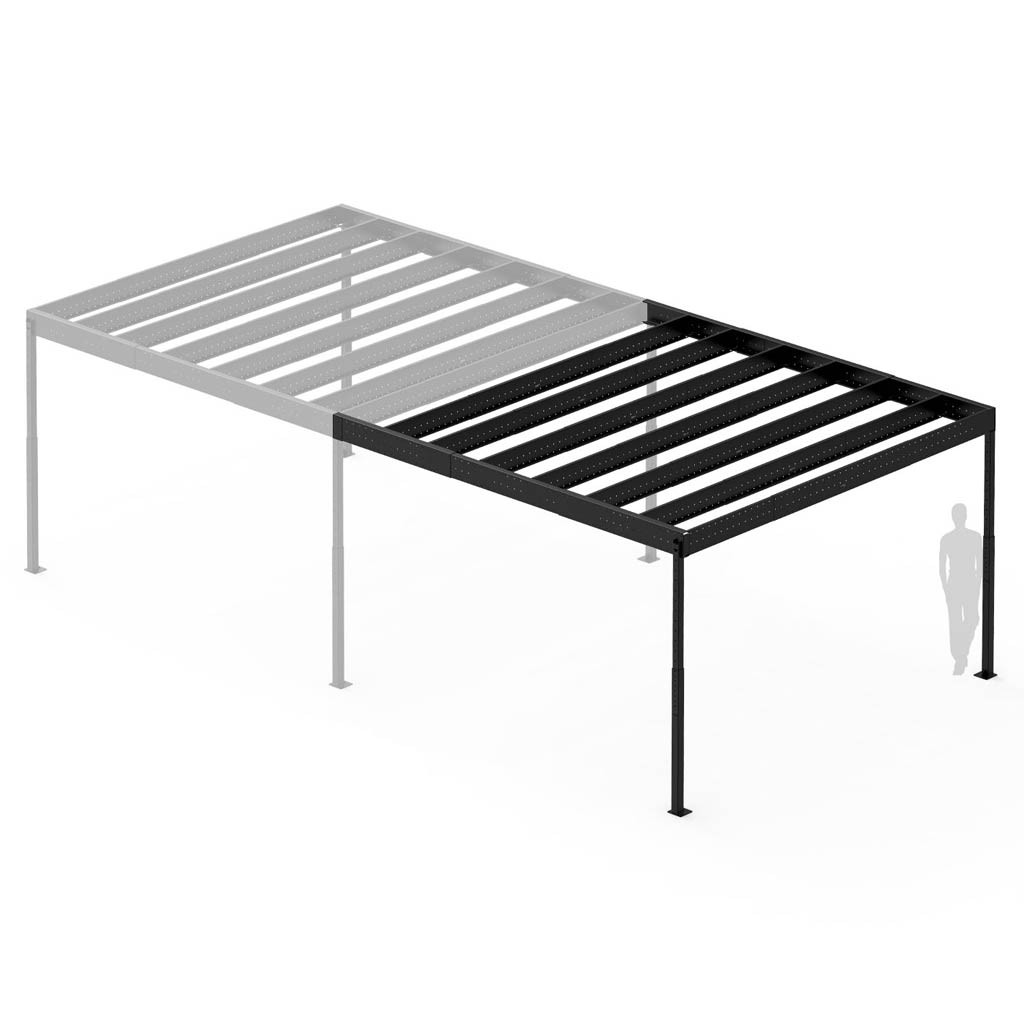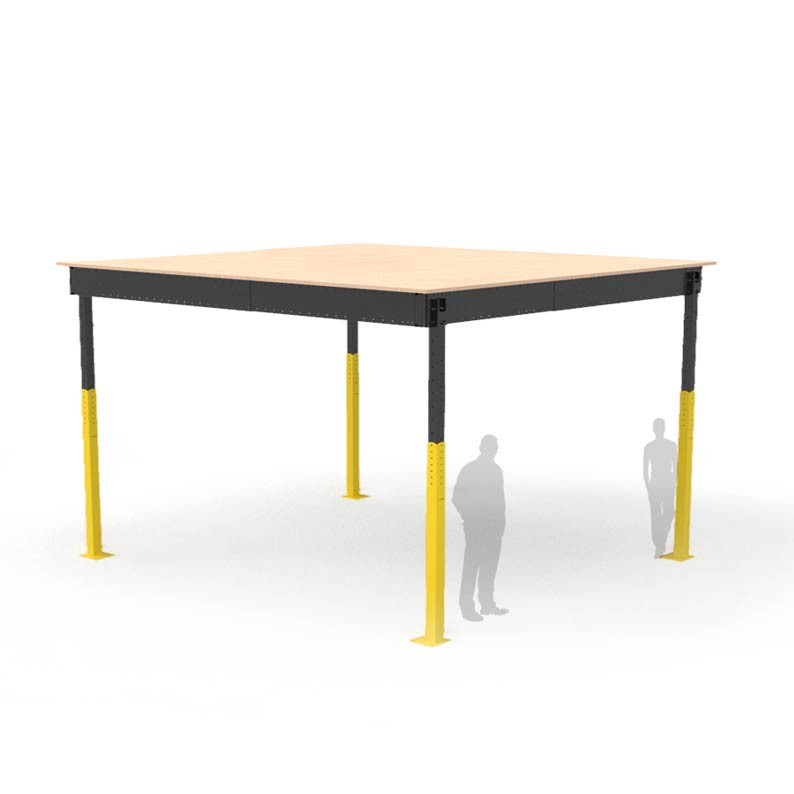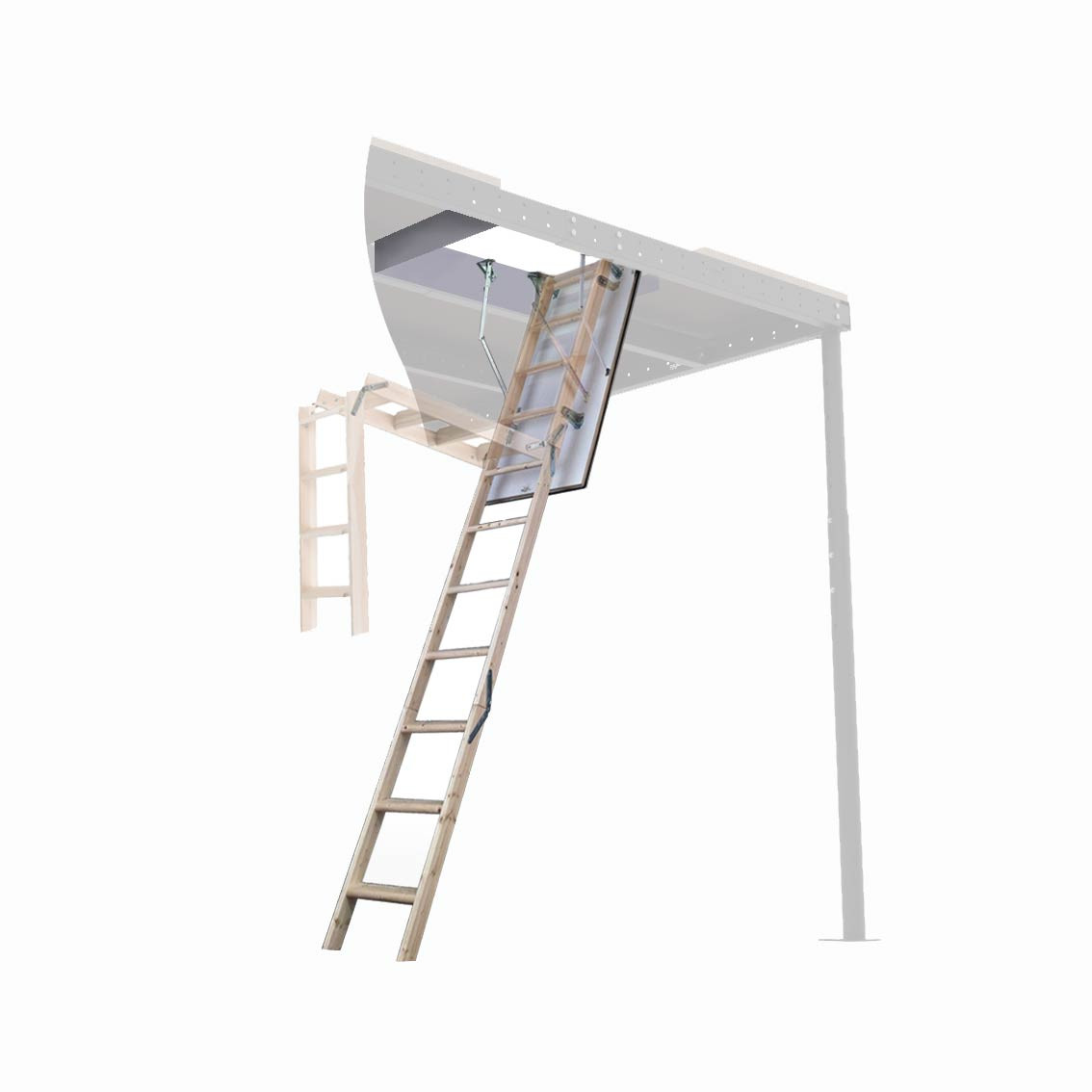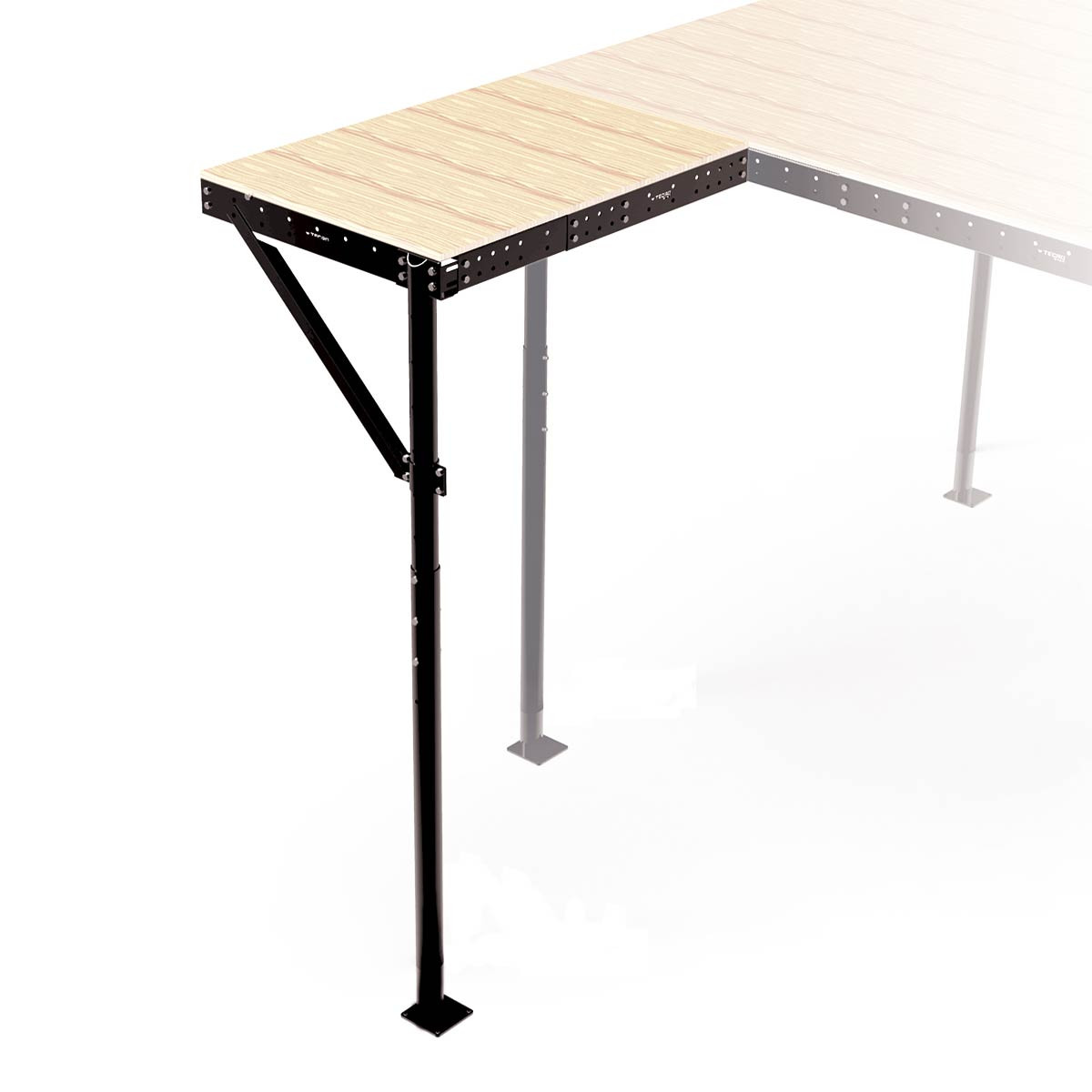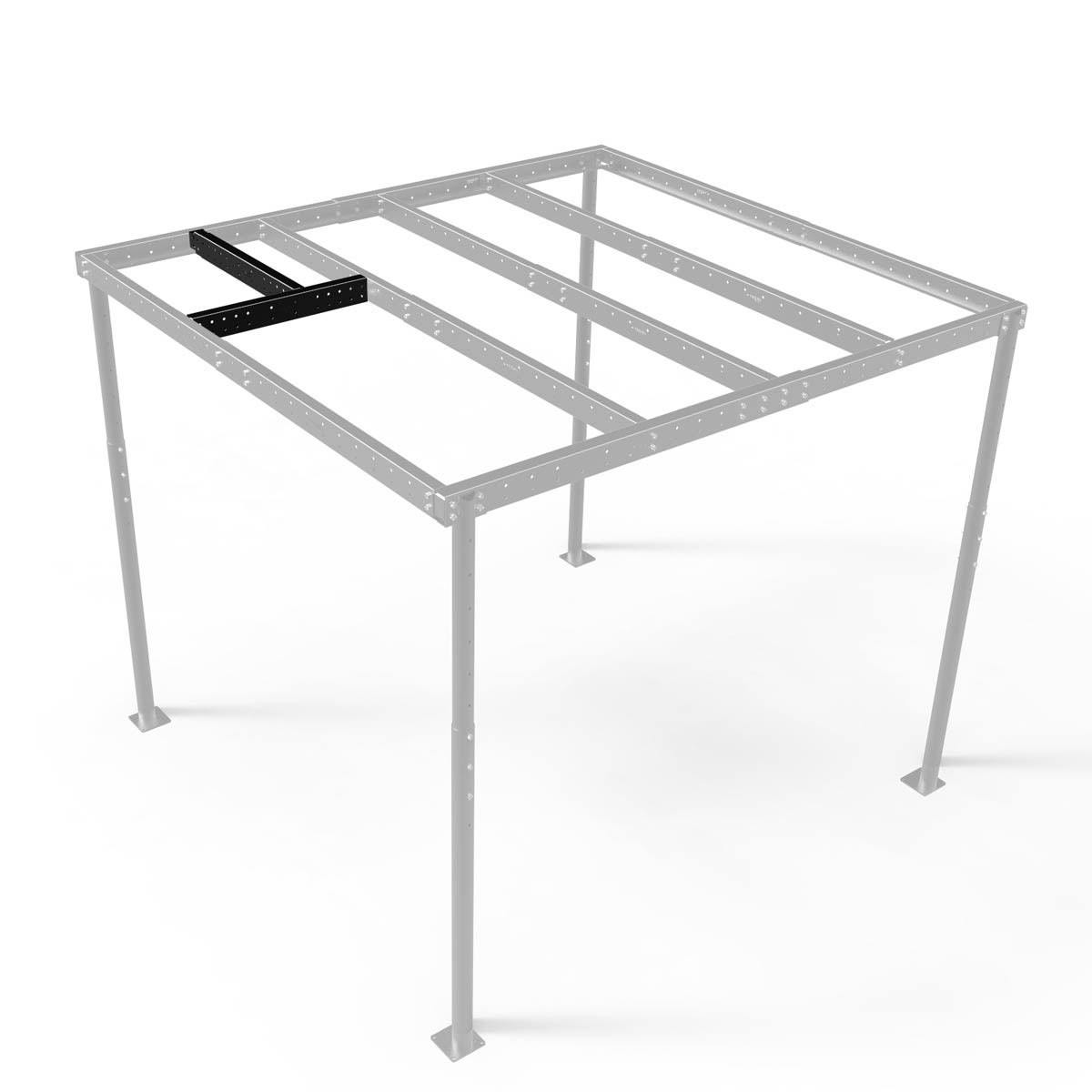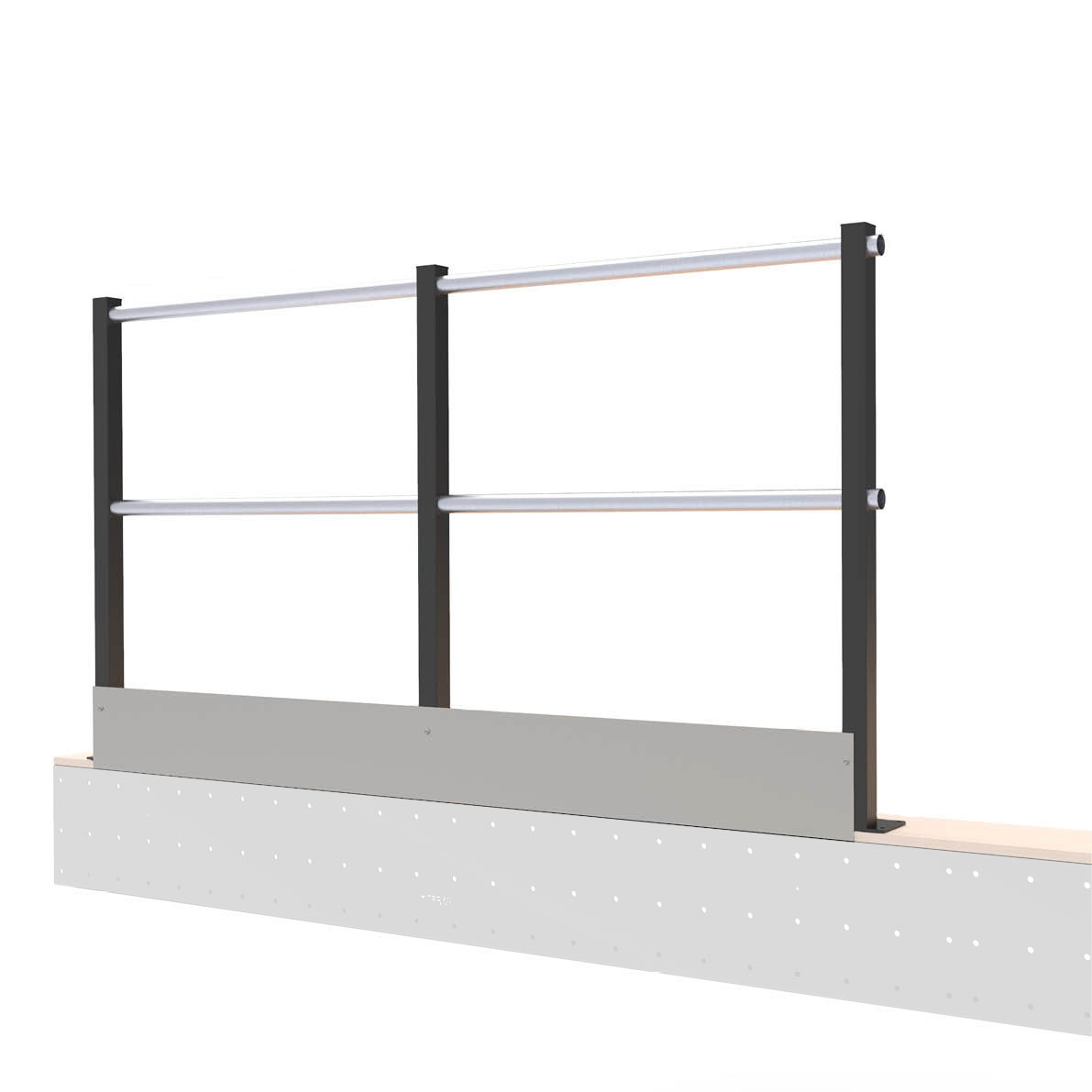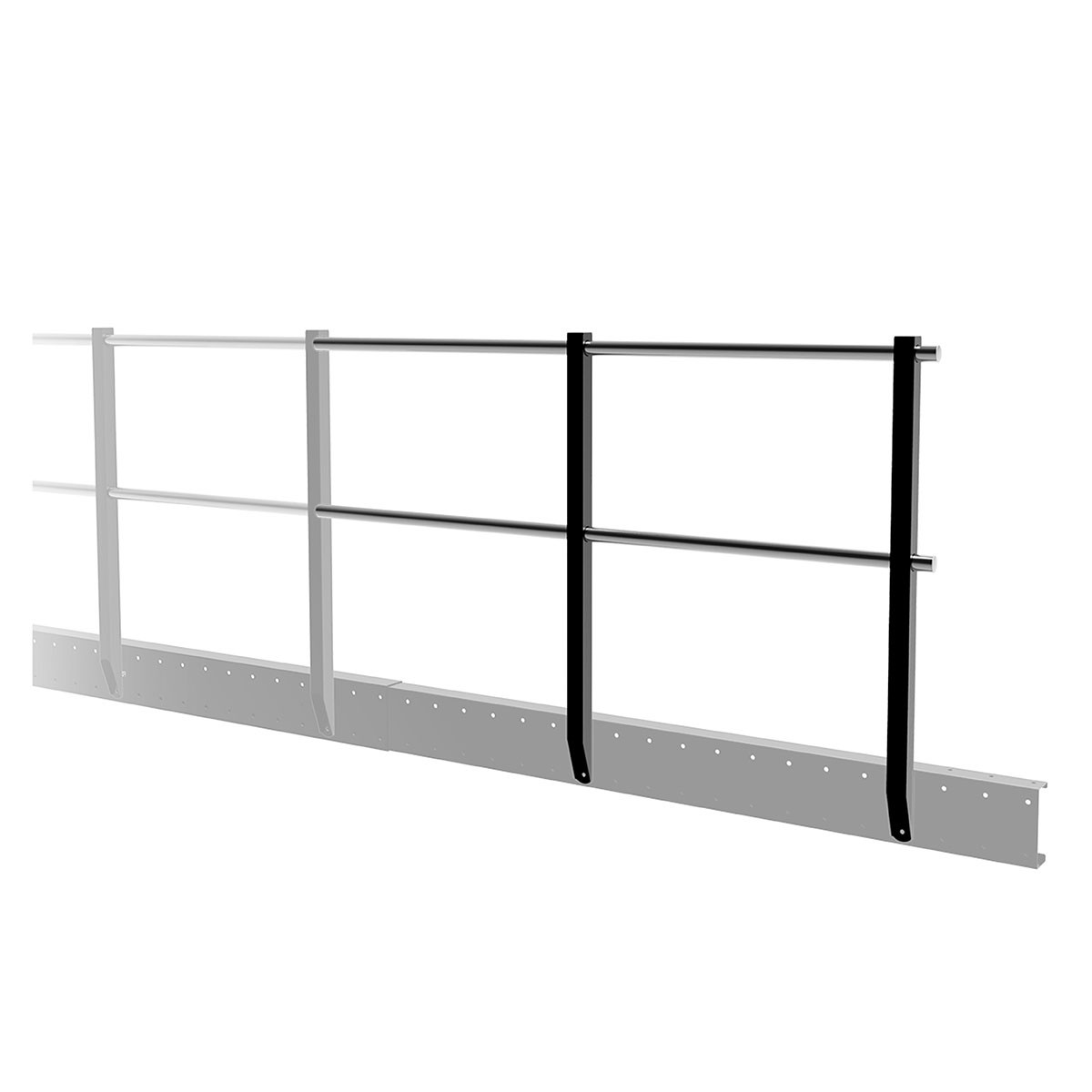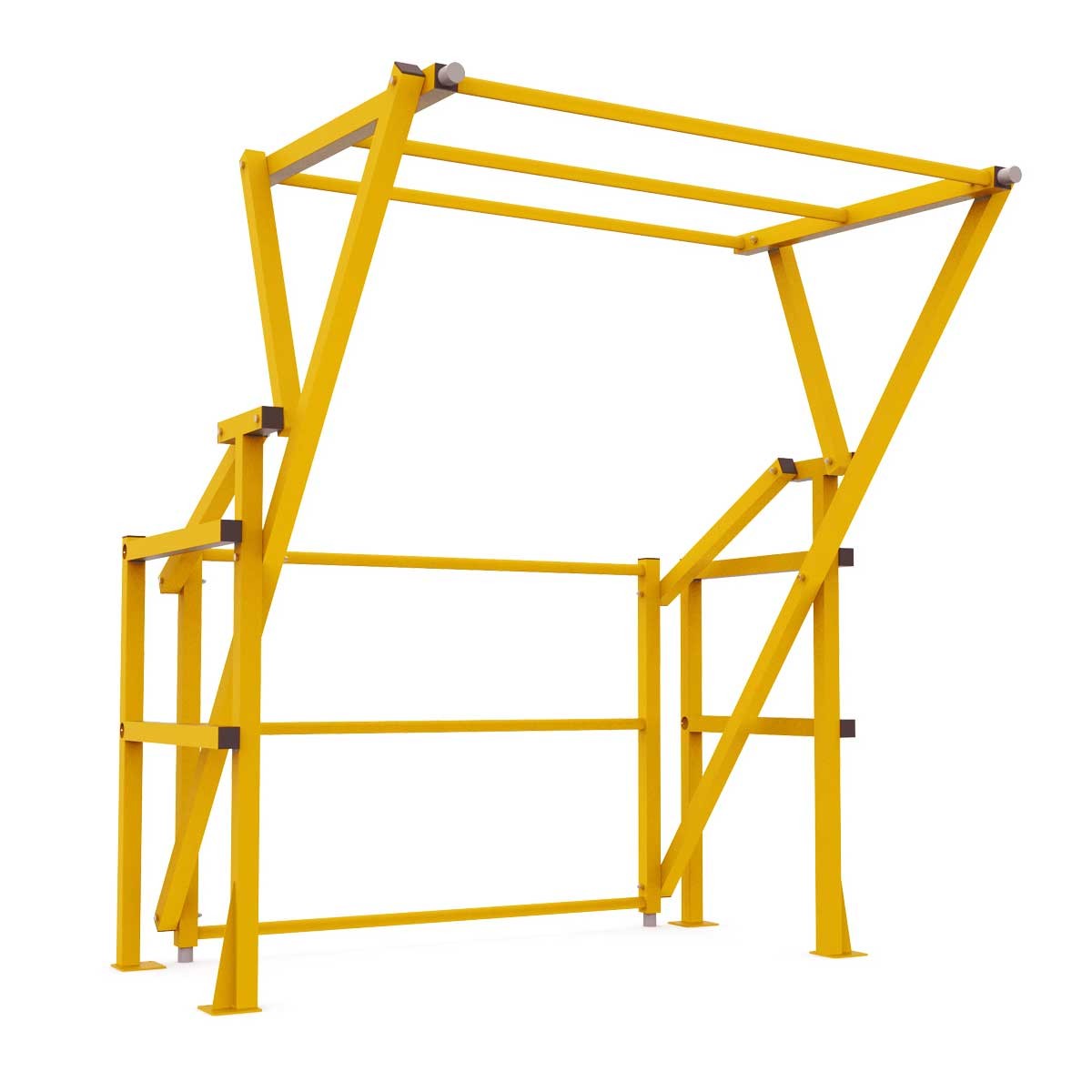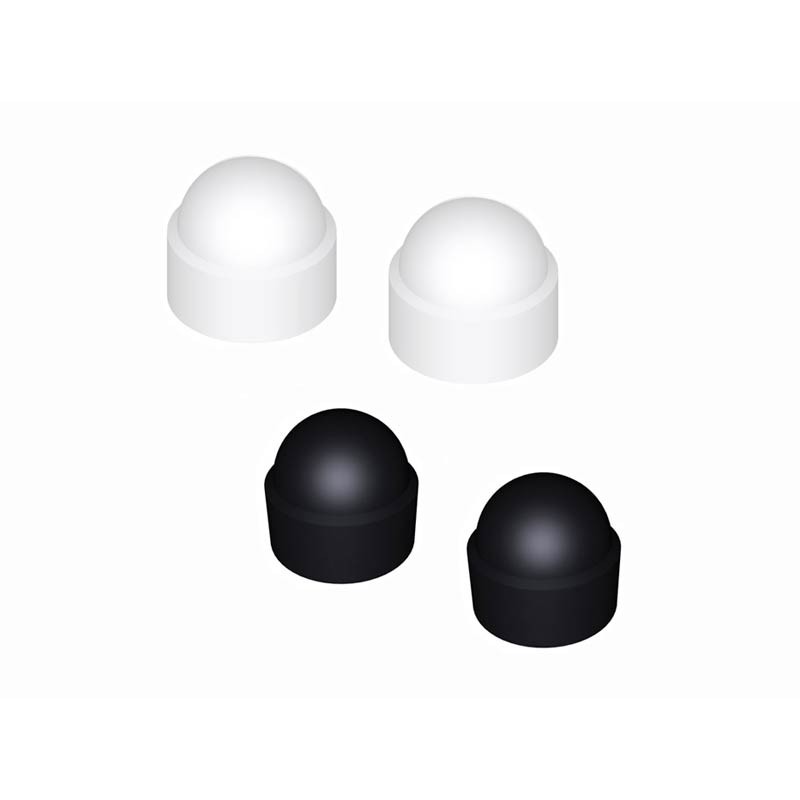Stairs
- Lateral stairs
- Ladder
- Boat Ladder
- Truckle Bed Straight Stairs
- Industrial alternating tread stairs 63º
- Alternating tread stairs 62º
- Straight Stairs
- Spiral Stairs
- General Access Stairs 36º
- Public Access Stairs 30º
- Standard stairs with landing
- Standard Stairs
- Telescopic wooden Ladder
- Folding Stairs to wall 45º
- Folding Stairs to wall 54º
- Telescopic aluminium ladder
The stairs can be placed in different positions, increasing the possible configurations
- Exterior stairs, perpendicular to the mezzanine.
- Interior stairs. You will need a beam for interior stairs.
- Exterior stairs, parallel to the mezzanine. You will need a stair landing.
- A different placement to our mezzanines.

Yes, our stairs are compatible with other ranges, provided that the height of the staircase matches the height of the mezzanine or surface to be reached.
In our online shop you will find a wide range of staircase models with different heights. This allows you to choose the one that best suits your needs and specific height.
If you wish to install a staircase in XL mezzanines, it is necessary to purchase the Adapter for accessories, which will allow you to integrate it properly.
Yes, our products can be installed outdoors, although you should bear in mind a series of special considerations and carry out maintenance of the material to guarantee that they are in good condition.
Yes. They can be installed on a surface that is not a Tecrostar surface.
Wall anchors for concrete or brick are used to fix staircases to walls made of these materials.
The customer must bear in mind that they are responsible for the strength of the joint and structure to which they are anchored.
If you need to anchor the stairs to a structure that is not a Tecrostar structure, see the following details about the anchors:
- Anchor A: References that have this anchor: 30303, 30501, 30401, 31003, 31301, 31102, 35100, 35000, 34001, 30900
- Anchor B: References that have this anchor: 35200, 35300
- Anchor C: References that have this anchor: 30601, 30801
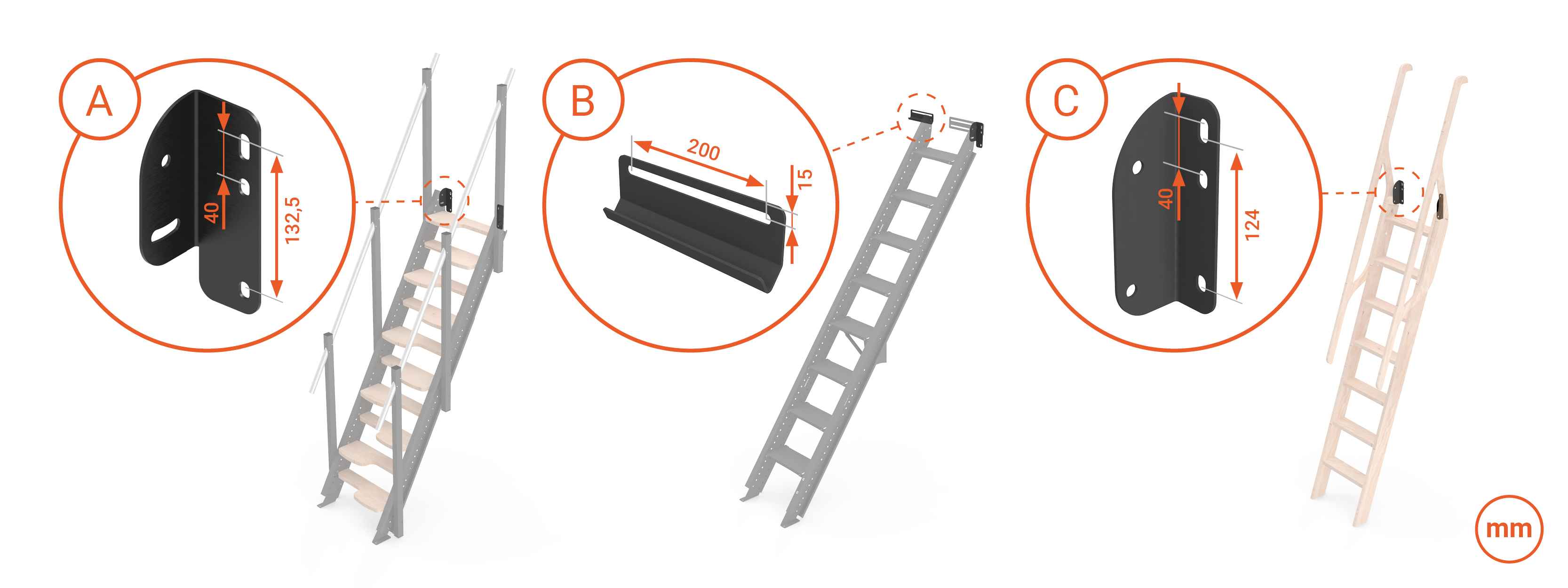
The minimum width is 745 mm and the maximum is 1145 mm. The length should be more than 1300 mm.
No, it can’t. This kit is specially designed to be used with our staircases.
In TecroStar there are different types of staircases: some for private use, usually located in small spaces, some for general use, wider and more comfortable, suitable for workplaces or commercial premises.
Defining the intended use of the staircase is basic in most standards. Staircases are generally classified as service or private stairs, as well as general or public use stairs, the latter being more demanding.
There are in place many regulations for staircases in the different countries in which TecroStar is present. Therefore, it is difficult to determine whether a staircase type complies with a particular normative.
Our stairs are designed by defining the general criteria for each type of staircase, so that these are well defined and checked against those in the regulations:
- Usable width.
- Rung tread and riser dimensions.
- Permissible step and staircase loads.
- Handrail heights.
However, some regulations also refer to very specific construction parameters and details:
- Material of the step.
- Railing and handrail design.
- Type of riser.
- Step nosing (or overlap between steps).
- Ceiling height clearance.
There are very few international standards that cover the design of staircases, one of which is ISO 14122 "Safety of machinery. Permanent means of access to machinery and industrial installations", whose criteria are suitable for our category EASILY ACCESSIBLE STAIRS . For all other regulations, the general criteria should be verified, which can be easily compared with the data in the Technical Data Sheets.
If you have a specific regulation that your staircase must comply with, you can ask us and we will try to help you in your decision.
The anchor that connects the ladder to the mezzanine can be fastened with 2 or 4 screws. If you opt for the 2-screw configuration, the ladder will have the ability to pivot upwards. It is important to note that in both cases the ladder retains the same strength.
This adjustment is available on all Tecrostar straight flight ladders.
With the Electrical stair lift kit compatible with Japanese, straight and side ladders, you will be able to lift your ladder in complete safety and hide it at the height of the mezzanine.
Yes, the direction of rotation can vary.
Each model of stairs has an inclination and it cannot be changed unless otherwise stated. You must choose the stairs that best suit your needs.
The stairs include the maximum number of steps that are required in their maximum heights. The more the height is reduced, the less steps will be installed. However, you can acquire additional steps as spare parts, the number of steps is designed according to the inclination of each staircase though. An excessive number of steps would reduce the going available for treading, specially important when going down.
Yes, the railing of both sides of the stairs is removable and, therefore, it can be taken off. However, we recommends to install it for security and because they provide rigidity to the stairs as well.
On the other hand, the stairs include the railing; it is not possible to acquire them without the railing.
Yes. You will have to acquire the beam for interior stairs.
Check the the table with the specifications of each staircase.
No, you can’t.

